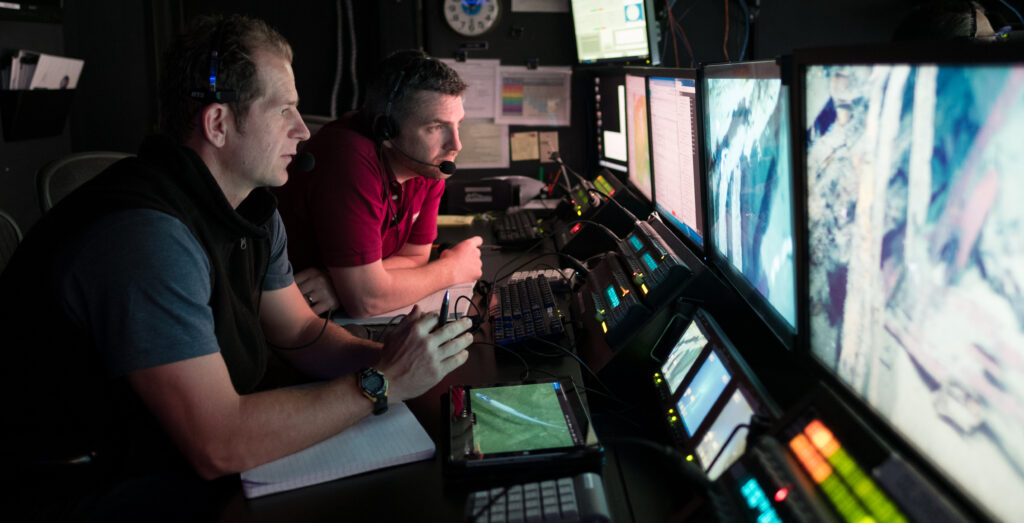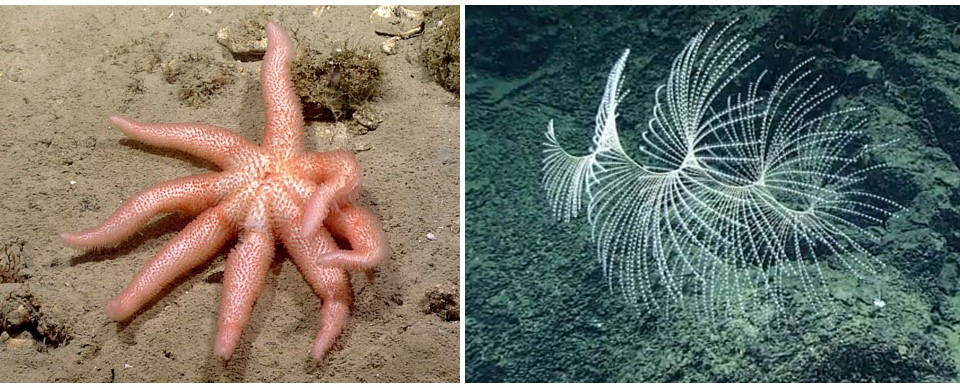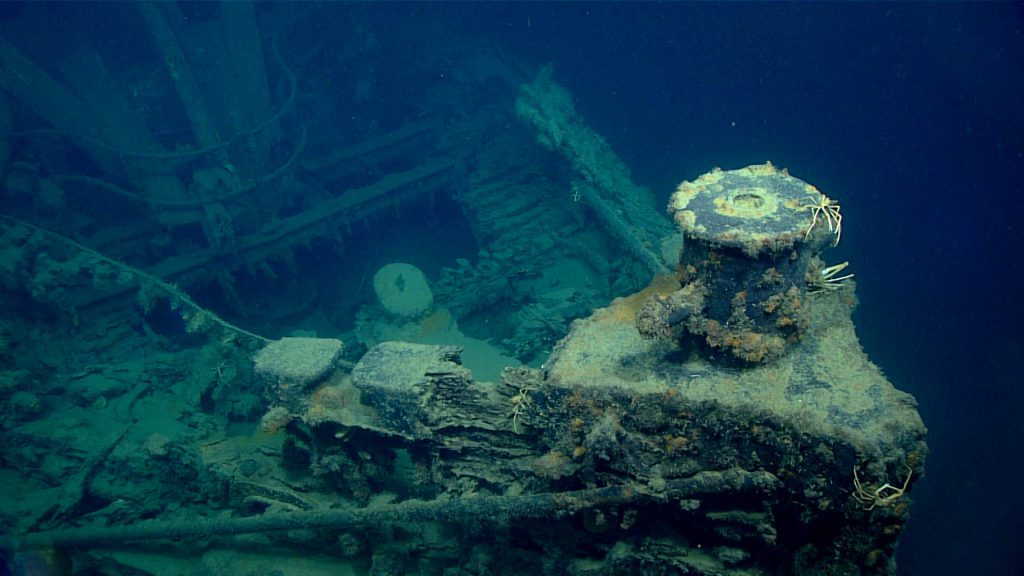This spring, scientists completed a 23-day expedition aboard NOAA Ship Okeanos Explorer, collecting data on poorly understood deep-sea habitats in the Gulf of Mexico. The researchers used remotely operated vehicles (ROVs) to survey areas, both never explored and previously investigated, identified as priorities by ocean management and scientific communities.
Sending ROVs equipped with state-of-the art cameras and lighting down to depths approaching 2.5 miles, the team encountered a diverse seafloor of deep coral and sponge communities, bottom fish habitats, seamounts, undersea canyons, shipwrecks, and a variety of chemosynthetic habitats, including cold seeps, mud volcanoes, and brine pools.

The researchers documented the first known observations of several marine species in the gulf (e.g., Remaster palmatus sea star, Metalogorgia melanotrichos coral, and Myxasteridae sea star), including some which further analysis may reveal to be new species. The team also witnessed never before seen behaviors in animals, such as the burrowing of a deep-sea octopus (Muusoctopus johnsonianus), and a Pythonaster sea star feeding on a glass sponge.

The gulf has an estimated 4,000 shipwrecks on its seafloor. Previous discoveries include several late 19th- to early 20th-century wooden sailing vessels, as well as the only World War II German U-boat sunk in the northern gulf by Allied forces. On this mission, the researchers explored a handful of shipwrecks for the first time, including one thought to be the New Hope, a tug lost off the Louisiana coast in 1965 during Tropical Storm Debbie.

The biological, chemical, physical, geological, and archaeological data collected on the expedition will inform management decisions about Essential Fish Habitats, Habitat Areas of Particular Concern, and national marine sanctuaries and their proposed expansion areas. Any consideration of new designations will also include discussions with a broad group of stakeholders, including fishermen, the oil and gas industry, scientists, and other interested parties.
The telepresence-enabled expedition broadcast high-definition video from the ROVs in real time over the internet and permitted shore-based scientists to interact with the ship. This technology also allowed the public to experience deep-sea exploration, the wonder of discovery, and the fascination of science in real time.
The mission was the final of three Okeanos expeditions in the gulf since 2017 conducted by NCCOS; NOAA’s Office of Ocean Exploration and Research; NOAA’s Deep Sea Coral Research and Technology Program; NOAA’s National Environmental Satellite, Data, and Information Service; NOAA’s Office of National Marine Sanctuaries, and NOAA’s Office of Marine and Aviation Operations. The expeditions supported a variety of projects, including the Southeast Deep Coral Initiative—a NOAA-led interagency effort to coordinate deep-sea coral and sponge research in the southeast United States.
Details about this expedition, including a large collection of images and videos, are available on the expedition’s website.
For more information, contact Daniel.Wagner@noaa.gov.
